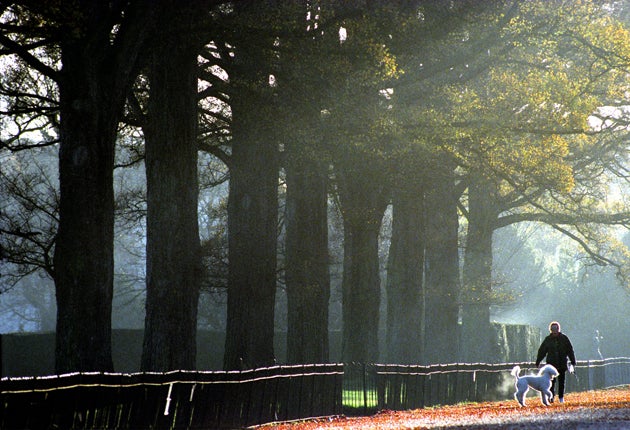'Super elms' begin to fill the gaps in English landscape
Saplings are to be propagated from specimens that survived when 20 million trees perished. Planted nationwide, they may transform the landscape again

Your support helps us to tell the story
From reproductive rights to climate change to Big Tech, The Independent is on the ground when the story is developing. Whether it's investigating the financials of Elon Musk's pro-Trump PAC or producing our latest documentary, 'The A Word', which shines a light on the American women fighting for reproductive rights, we know how important it is to parse out the facts from the messaging.
At such a critical moment in US history, we need reporters on the ground. Your donation allows us to keep sending journalists to speak to both sides of the story.
The Independent is trusted by Americans across the entire political spectrum. And unlike many other quality news outlets, we choose not to lock Americans out of our reporting and analysis with paywalls. We believe quality journalism should be available to everyone, paid for by those who can afford it.
Your support makes all the difference.The elm, once a common and striking feature of our countryside, may flourish once more, defeating the blight of Dutch elm disease that laid waste to millions of specimens. Certain trees have been discovered unscathed in areas where most others were wiped out, prompting the hope that these may hold the secret to immunity.
The charity Conservation Foundation is to launch the "Great British Elm Experiment" later this year, with the help of schools. The volunteers will be planting more than 2,000 saplings propagated from specimens that have escaped Dutch elm disease. The saplings will be planted at sites across Britain and encouraged to grow naturally. After around 15 years it will be clear whether it is their apparent immunity that has helped them to withstand the blight.
The scientific community is divided over the likelihood of an immunity to Dutch elm disease. Dr Joan Webber of the Forestry Commission says the opinion of researchers leans more towards the idea that the elms survived because of external factors, such as climate or location, rather than because of some other inherent quality.
The hopes of some experts have been pinned on hybrid elms, bred by specialists to be highly resistant to the disease. One such tree, the Sapporo Autumn Gold, has now been thriving for 30 years. The hybrid has Asiatic heritage and does not resemble native elms such as the wych elm.
The Conservation Foundation is initiating a nationwide search for the examples of the Sapporo Autumn Gold, recording their success in resisting the disease.
Some experts in the natural world, however, are critical of the Sapporo Autumn Gold. According to Andrew Brookes of Butterfly Conservation, it does not look at home in the British landscape.
Traditional elms were once a prominent feature of the countryside, beloved for their beautiful shape and appearance. In the late Sixties, the trees could be found from the South Coast to Scotland, from East Anglia to the North-west. Then a devastating new strain of Dutch elm disease swept the countryside, and over the next decade the UK lost 20 million of its estimated 30 million specimens.
The tall and graceful trees are valued not only for their beauty. Elm wood's interlocking grain renders it resistant to splitting, making it a favourite material for cabinet-makers. Elms are also a crucial habitat and sole source of food for the elusive white-letter hairstreak butterfly. Butterfly Conservation is running trials on American and European elm cultivars which they believe may adapt well to the English countryside.
In the meantime, many environmental and countryside enthusiasts will be hoping fervently for the success of the Conservation Foundation's experiment. The foundation's hope that it has indeed identified an immunity to Dutch elm disease may be our only chance of seeing native elms thriving naturally in the UK again.
Join our commenting forum
Join thought-provoking conversations, follow other Independent readers and see their replies
Comments